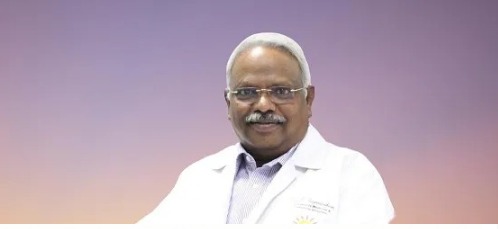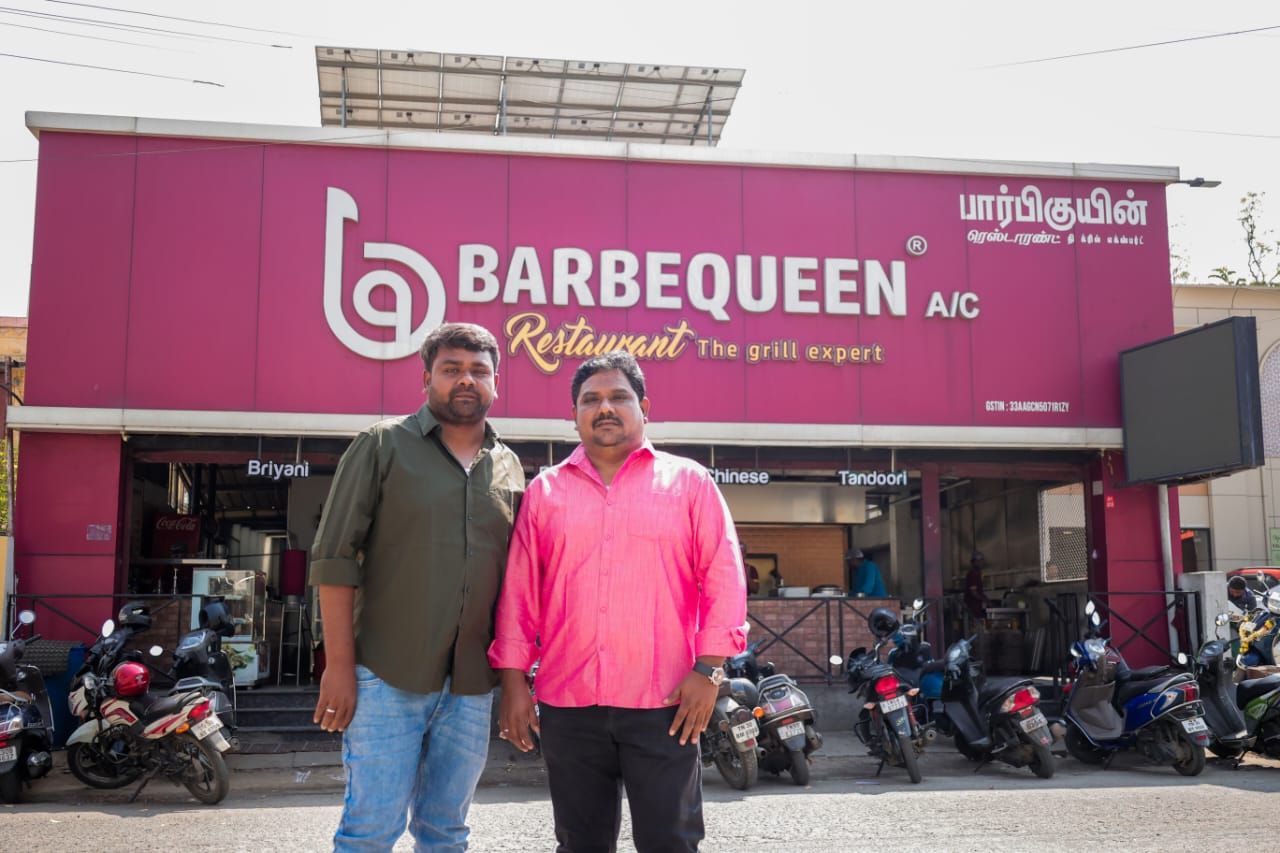Trending Now
- 830 voters names go missing in Kavundampalayam constituency
- If BJP comes to power we shall consider bringing back electoral bonds: Nirmala Sitaraman
- Monitoring at check posts between Kerala and TN intensified as bird flu gets virulent in Kerala
Tamilnadu News
“Don’t Be Afraid Of Rising Positive Cases; Be Alert Instead”
![]() June 24, 2020
June 24, 2020
Dr P Kuganantham is an unassuming man for an award-winning public health expert and epidemiologist. Having served the government of Tamil Nadu for over three decades, he is now part of the expert panel advising the state on COVID-19.
He has witnessed and worked on curbing and containing at least seven different epidemics in Tamil Nadu in his career. He also led the team that discovered a new strain of the cholera bacteria – Vibrio cholerae – dubbed the ‘Madras Strain’ in 1992-93. The swine flu epidemic, chikungunya, dengue and leptospirosis epidemics too took place while he was in government service.
In an exclusive interview with The Lede, Dr Kuganantham speaks of why we need not be afraid of rising numbers of positive cases in the state and what must be done to break the chain of infection spread.
“Don’t be afraid but be alert. The positive cases are only indicators of our (government’s) good performance. Our indicator is only deaths – deaths must only come down,” he said.
Dr Kuganantham explained how the infection and policy unfolded from the time the first cases of COVID-19 were reported in India. Today, he says, we are at a point in Tamil Nadu, where most COVID-19 related deaths can be avoided with some proactive treatment protocol.
Back in February and March, he says, “People in India were worried about how we would tackle the virus when the western world was not able to. But fortunately, we went in for a (nationwide) lockdown. And the lockdown delayed the spread of the infection to the community. In India, people coming from China and other European countries were quarantined earlier.
The quarantine was not very strict initially so the infection spread to their contacts. It was by the end of March and the beginning of April that quarantine was tightened.
So the disease started spreading from people who had travelled from abroad.
Subsequently we had three clusters in Chennai. The first was the Delhi Tablighi cluster – we cannot blame anybody of course, it was an unintended episode.
Then we had the Koyambedu cluster which took the disease from Chennai to other parts of the state.
The third cluster is the people returning from Mumbai, Gujarat and Delhi. But we have been able to uproot and close down all these clusters effectively and control them across Tamil Nadu,” he said.
Why Are Cases Continuing To Rise In Chennai?
“Unfortunately Chennai is a complicated cosmopolitan city with 75 lakh people on the rolls and another 35 lakh migrants, mobile population,” explained Dr Kuganantham.
“One third of the city is slum population. Even during the lockdown, people were not able to stay indoors for long because the square feet area of the houses in the slums is very very small. We were not able to impose lockdown properly here and it is not their fault nor our fault because their living conditions are such.
The curfew was not strictly regulated in places like say Tondiarpet zone or Basin Bridge zone or Pulianthope zone. When every district was controlled, in Chennai it was increasing. There were instructions from ICMR to test more.
As a core committee member, I was saying there should be focussed testing.
The number of positive cases will increase and should increase – because this means that we are identifying more cases and treating them and stopping the spread of the disease. So increase in positive cases means we are going towards stamping out this epidemic,” he said.
Focussed Treatment Protocol
Dr Kuganantham says that the state developed a strategy to ensure that high risk patients were put on the priority list for testing and treatment.
This move was to avoid deaths due to COVID-19.
“We have to take care of patients with comorbidities. So increase the tests and focus them towards patients suffering from diabetes, hypertension, cancer, asthma, tuberculosis, dialysis patients. Chennai Corporation is doing house visits and is able to pick up these patients,” he said.
Does Every Positive Patient Need Hospitalisation?
The expert says not everyone needs hospitalisation.
In fact only a very small percentage of those who test positive for the virus actually need to be hospitalised.
“When the news about the disease was in the media about the large number of deaths in other countries, people were rushing to hospitals to get themselves tested. But all positive patients need not be hospitalised. Many are positive for the virus but they are not patients. If 100 people are infected by the virus, only five of them need to be admitted for hospital care. 95% of the people are just infected – most belong to highly mobile populations.
The majority are middle aged and younger people. The potential danger among these people is that they are likely to infect the elders in their family or in the community. All the positive cases in the middle aged or younger aged groups should be quarantined in the institutional facilities but they need not be hospitalised.
Those who are immuno-compromised are liable to contract the disease. But the global picture shows 65-70% of people who have died of the disease are elderly people. This is the same case in India.
Youngsters may get it provided they have a pre-existing disease. For example, a 30 year old man will get it if he has tuberculosis or asthma. The virus is going to affect people who have immuno-compromised state or suffering from a disease.
The challenge for us now is taking care of patients in medical college hospitals and other hospitals, where patients who are critically ill and people having mild and moderate symptoms should be taken care of at secondary level care centres.
Doctors have been told to monitor those with mild and moderate symptoms so that if they worsen, they can be shifted to hospitals. This ensures that the critically ill patients are given priority and death can be avoided.
Personal hygiene, wearing masks, social distancing, all these things should be taught to the quarantined patients.
We have also suggested O2 wards in all the tertiary care centres like Stanley Hospital and Omandurar. We want to keep 100 beds exclusively for patients who come in with hypoxia (low oxygen saturation in the blood).
The disease affects the alveoli (branches of air tubes in the lungs) of the lungs and also causes thrombosis or clotting of the blood. These two issues are to be handled.
After testing the patient who develops breathlessness, the patient can be checked for lung lesions or opacity by doing an X-ray. These patients have to be treated.
If they are identified early and treated, the chances of recovery are much higher,” said Dr Kuganantham.
Why This 12-Day Lockdown In 4 Districts?
“I recommended that in the expert committee to the chief minister because the government was not interested in going in for a lockdown as it affects the economy, especially a large number of daily wage people,” said Dr Kuganantham.
“Before this lockdown we had a steady increase in deaths in Chennai. So we thought we have to halt these deaths. The lockdown is not only a curfew but it is also about planning our strategy at hospital level management and also our field activities, identifying infected patients, so that we can break the chain of transmission in the community.
Actually, we asked for 14 days, we got 12 days – we plan to use these 12 days to streamline patient care in the government and private hospitals.
We will increase testing and increase focussed testing on comorbid patients and breaking the chain of infection from rampantly spreading in the community.
I have been saying for the past one month that this has to come an end soon. I have seen 7-8 epidemics and any epidemic or pandemic does not have a life after the fifth month.
The third, fourth and fifth months will see the highest infections.
Even in 2009, the swine flu epidemic, we had it for three months and then it was endemic. Even now it is endemic. What I mean is a large number of people getting infected, getting admitted to hospitals – all this happens within three to four months.
Subsequently the infection always reduces and the disease is found here and there in the community. That is called endemic situation. This infection should be there till the end of this month of the next month.
Epidemic predictions are based on our experiences.
If the community participates in breaking the chain of spread, it should come down within a month or 45 days from now.
If the regulations are strictly followed – in China or western countries, people stick to the regulations. Here, we cannot blame the people because we have laid a foundation of pathetic living conditions for the people. Slums are still there in the country even after 75 years of independence. Though slum populations are not badly affected, positive patients are there.
The working community in any metropolitan city will move around and are likely to infect others. We will definitely see a declining trend.
The peak period has already started and my assessment is that it will go on for another 3-4 weeks.
If it is high, it will go on for another one month. That’s it. It cannot be December or next year. Because the evidence for this is China and other countries,” he said.
What About A Cure For The Virus?
Dr Kuganantham says that instead of waiting for a cure or a vaccine, it is important to simply focus on testing, containing and treating the symptoms of the infection. That in itself, he feels, will save lives and make a vast difference.
“As a public health person, an epidemiologist, I would like to take care of supportive treatment for patients suffering from the viral infection.
The virus has to die in the human body if it has no effect on the system. It will die in a 28-30 period if it has no effect in the system.
In the RT-PCR we are able to see the dead virus also. The point is if you’re going to treat them properly for the comorbid conditions and also the anti virals recommended by the international agencies like WHO, the patients will recover. The patients need more oxygenation because they suffer from hypoxia. Pneumonia, pneumonic consolidation needs to be taken care of with bronchial dilators. Patients will then recover fast,” he said.
Dr Kuganantham is confident that Tamil Nadu will come out of this pandemic very soon. He bases his confidence on a variety of factors.
“We have a very strong public health system in Tamil Nadu which is why we are able to bring in a large number of cases. When other states are not able to bring out cases, we have a very good filtering or surveillance system.
Tamil Nadu is the first state to identify and admit more people. Recovery rate is quite high. I think we are the best in the country because we have the political support, the doctors’ support and the support of all healthcare workers.
There is no state in the country which has 2000 primary health centres. We have 17,000 sub-centres. These are all not built in a day, it was built over three-four decades.
We are the largest testing state in the country and we have identified the challenges and are addressing it.
So if you want me to rate the performance of the government, the performance of the doctors, the performance of the conservancy and sanitary workers, the police, all other departments – Tamil Nadu should be rated to be number one,” he said.
A Need For Community Participation
Dr Kuganantham reiterates that community participation will help hasten the end of the virus by breaking the chain. And for this, a few simple rules need to be followed rigidly until the infection spread is under control.
“Hand washing should be there. Face masks should be worn. People should avoid crowds and crowding.
If we are going to plan living with this virus as an endemic, we have to change the way we live too. The epidemic has brought in a change in the medical system and standard also.
There needs to be a change in the way people live. Wash your hands, keep your personal hygiene, keep your environment clean, wear a mask and keep a distance from others.
People should not be frightened but they should be alert. The basic things – hand washing is very important.
In Nigeria when Ebola was killing people, the WHO and the Nigerian government were not able to find an answer to it. They only said wash your hands at least five times a day. It has brought down the disease,” he said.
























